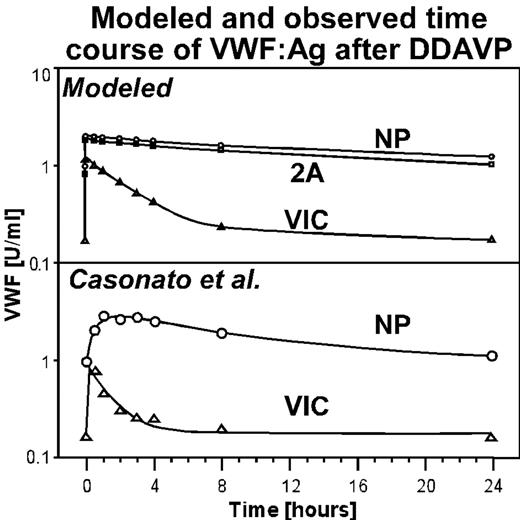Abstract
The pathogenesis of VWD Vicenza has remained elusive. VWD Vicenza is characterized by low plasma but normal platelet VWF concentration, the presence of ultra-large plasma multimers, and a heterozygous R1205H mutation. VWF Vicenza is reported to have a decreased half-life in the circulation. When we expressed rVWF Vicenza R1205H in 293T cells, it was secreted with wild type efficiency and multimer distribution, suggesting that the primary defect is accelerated clearance. To evaluate this hypothesis, we developed a pharmacokinetic model of VWF multimer catabolism. The initial assumptions are: 1. Secretion occurs at a fixed rate with the initial “ultra-large” multimer distribution seen in platelet alpha granules. 2. Cleavage of multimers occurs with a probability p that increases with increasing multimer size. 3. Clearance occurs with a time constant determined by the plasma half life and is independent of multimer size. Modeled multimer distributions were compared to those determined experimentally for patient plasma samples. The effects of DDAVP infusion also were modeled and compared to published data (
Author notes
Corresponding author



This feature is available to Subscribers Only
Sign In or Create an Account Close Modal